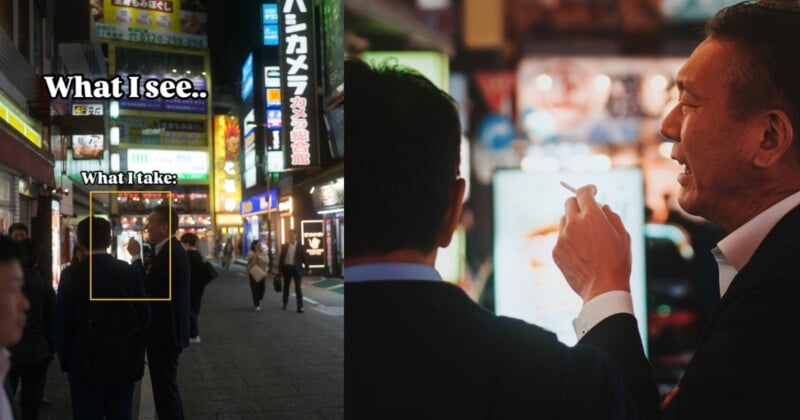What a Street Photographer Sees vs What He Shoots

A street photographer has revealed the fascinating difference between what he sees and the final image that he shoots.
Freelance photographer and filmmaker Benjamin Lee, commonly known as Itchban, shared a series of viral photo carousels on Instagram and TikTok that give insight into his creative process.
![]()
With these photo carousels, Itchban lets his followers in on his vision — pairing the wide, everyday scenes he initially sees with the tightly framed, striking shots he ends up taking. Each comparison highlights his sharp eye for detail and ability to find beauty in the ordinary.
The “What I see vs. What I shot” format — which has become a popular trend on social media — typically begins with the photographer showing a wider, unedited view of a scene, marked with a box that shows the composition that they are focusing on. This is then followed by the final finished image that the photographer takes.
![]()
![]()
In one example, Itchban shows a wide shot of the Ushiku Daibutsu, a giant statue of the Buddha in Japan, with a tiny plane flying in the distance near the sculpture’s raised hand. In the second photo, Itchban reveals how he zooms in to perfectly align the statue’s fingers so it looks like the Buddha is pinching the plane, creating a clever optical illusion.
![]()
![]()
In another photo carousel, Itchban starts with a bustling street scene in neon-lit Tokyo. But in his final finished image, the photographer reveals how he zooms in on a sharply dressed man mid-conversation, capturing a candid, cinematic moment from the crowd.
‘How Photographers See The World’
Itchban says that years of experience have sharpened his instinct for capturing compelling street photos.
“After shooting for many years I have grown a sense and intuition of things I am attracted to photographing. This intuition is broad — things I like, things I don’t like, compositions, the way light & shadows hit a scene,” Itchban, who is based in Sydney, Australia, tells PetaPixel.
“For instance, when shooting street photography I like locations that have an older look to them because I feel like there is more history and untold stories hidden within them. For street photography subjects I look for similar attributes — people who look like they could tell you a million stories. I think through repetition and experience is how you build a vision and sense of style in your photography.”
Itchban says that the “What I see vs. What I shot” trend can be especially eye-opening for beginner photographers, who are still learning to spot compelling scenes in everyday life. Many beginners are still building experience with spotting scenes, understanding different lenses, and learning how editing tools like cropping, resolution, and color grading can elevate a simple shot into something striking.
“I believe my audience appreciates this trend and format because it shows an ordinary-looking scene before and contrasts it with how we photographers see the world and are able to capture a unique photograph from it,” Itchban explains. “This may be particularly insightful for non-photographers and beginners because, ordinarily they may not even notice that there is a photo opportunity in the everyday scenes.”
Itchban adds: “The secret ingredient to creating a unique photograph is the photographer. The photographer is the one who embeds their vision, feeling, and expression into ordinary scenes and makes them unique. Sorry to the folk who are gear-obsessed, but a great photographer is a great photographer regardless of what camera they use.
More of Itchban’s work can be seen on his Instagram, TikTok, and check out his website.
Image credits: All photos by @itchban